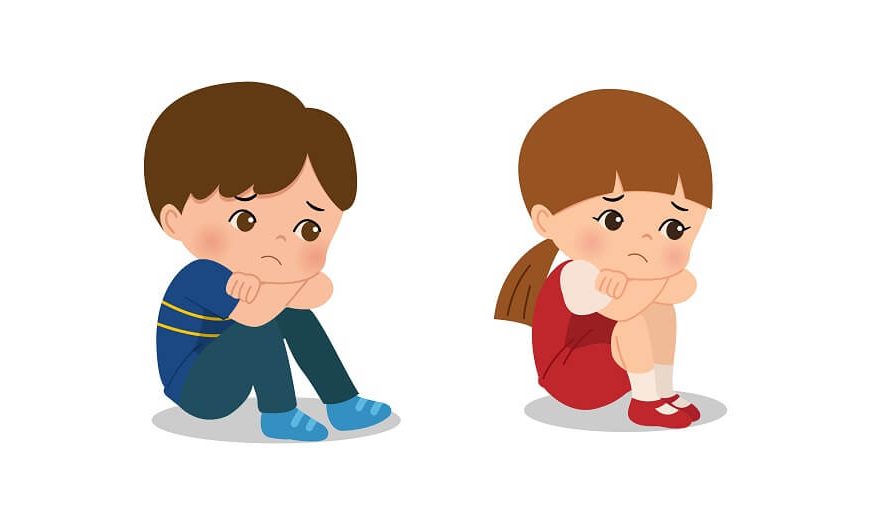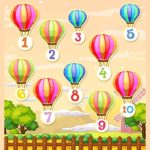Being a parent is a wonderful adventure full of wonderful moments and difficulties. Supporting our kids in emotional distress is one of our primary duties as parents. Even though it’s common for kids to feel sad occasionally, it’s essential to know how to support them through these emotions. This blog will explore valuable strategies for calming upset toddlers, managing anger in kids, understanding the triggers of their distress, and fostering emotional resilience. By implementing these strategies, you may create an atmosphere encouraging your kid to gain crucial emotional regulation skills.
As a result, we must direct our attention and effort to manage our own responses rather than attempting to quiet down our child. It entails taking the necessary steps to prevent the fight-or-flight reaction. Or, upon returning to composure, we become aware that we have switched to panic mode.
Playing this position is quite difficult. Before it becomes your default response, it could take some time and practice. This response will become more automatic the more frequently you apply these suggestions.
Understanding Your Child’s Emotions:
Understanding the complexity of your child’s emotions is essential before diving into practical techniques. Children, especially toddlers, may find it difficult to express their emotions, which may be confusing and frustrating. However, you may learn a lot about someone’s emotional condition by observing their behaviour and body language closely. The first step is identifying the symptoms of discomfort, such as sobbing, withdrawal, or tantrums.
Identifying Triggers:
It is essential to pinpoint the precise triggers that bring on these feelings to treat your distressed youngster effectively. Because every child is different, what disturbs one could not have the same impact on another. Keep an eye on your child’s behaviour and make a note of the conditions or scenarios that frequently cause emotional pain. You may proactively establish a supportive environment and devise measures to reduce possible outbursts by being aware of their triggers.
Strategies to Calm an Upset Toddler:
- Offer a Safe and Calm Space: Provide a designated area where your child can retreat when feeling overwhelmed. Provide a safe and calm space. This area must be serene and stocked with comforting objects like blankets or soft toys.
- Validate Their Emotions: Assure your youngster that their emotions are legitimate and that it is common to feel a variety of emotions. Try to say something like, “I realise you are upset,” or “It’s alright to feel frustrated.”
- Active Listening: When your child communicates their feelings, be there and attentive. Keep them in your gaze and listen to them with empathy so they may completely express their sentiments without interruption.
- Breathing Techniques: Teach your child basic breathing techniques like taking deep breaths in the belly or blowing bubbles. They can control their emotions and achieve inner tranquillity with these approaches.
Managing Anger in Kids:
- Teach Emotional Vocabulary: Encourage your youngster to express their rage rather than acting out violently verbally. Please give them a variety of emotional terms to choose from to understand better and express their emotions.
- Set Clear Boundaries: Set clear guidelines for what is and isn’t appropriate when your youngster is furious. Ensure they know the adverse effects of being aggressive and the significance of treating people with respect.
- Positive Role Modelling: Using effective anger control strategies and setting a positive example for your children is important. Show them how to vent their rage healthily, including taking deep breaths or partaking in a sport they like.
Creating a Supportive Environment:
- Establish Routines: Children benefit from consistency and structure because they feel secure and stable as a result. Creating regular routines might help people feel less anxious and stop unneeded triggers.
- Encourage Open Communication: Create a space where your child may freely express their feelings without worrying about being judged. Check in with them frequently, find out about their day, and pay attention to their worries.
- Teach Problem-Solving Skills: Encourage your youngster to discover solutions to their own problems to help them build their ability to solve them. Lead them through the procedure, providing assistance and advice as required.
How to Stay Present With and Listen To Your Upset Child:
- Talk Less: It may seem apparent, but in order to hear your child well, you must allow them uninterrupted space and time to communicate. You must do it while opening your ears and closing your lips. If it’s challenging or you want to “set the record straight.”
- No Multitasking: Consider subtle distractions like planning a clever retort, contemplating how long this discussion will last, or putting your phone away in addition to more common ones like switching off the TV or leaving your phone at home.
- Ask Clarifying Questions: You might ask your youngster to “Tell you more” or “Then what happened?” if anything is unclear or perplexing. Instead of making your inquiries become interrogations, be inquisitive and open-minded.
- Look For The Good: Instead of focusing excessively on the bad or the “flaws,” try to discover something accurate, uplifting, or constructive in what your kid is expressing. Finding something positive encourages empathy and will help you pay attention to what they say.
- Do Not Repeat: We frequently try to convey a point or teach a lesson instead of listening. When our children don’t pay attention, we repeat or paraphrase what we’re trying to convey. Leave your agenda at this time. Later, there will be sufficient time for instruction. Now pay attention.
- Allow All Emotions: Letting your kid be unhappy, concerned, or upset is challenging. Never advise someone to “calm down” or “stop crying” before you listen to them. Simply being present is better. Instead of trying to halt the disorder entirely, strive to be the “calm in their chaos.”
- Watch For Defensiveness: The opposite of listening is being on the defensive. Instead of being open-minded and inquiring, you will zero in on anything that is “wrong” or “inaccurate” in what your kid is saying while you are in this mindset.
- Cool Down: Recognise the signs that indicate when you’re feeling defensive. This might be done physically, such as by clenching your fists, or mentally, such as by accusing or threatening your child. To regain attention, remind yourself to breathe.
- Set a Time Later If You Cannot Listen Well Right Now: Delay the talk until you are composed again if breathing doesn’t help you defuse the situation. You may say, “I really want to pay attention to you, but I’m feeling frustrated. I’ll be able to concentrate better if I can take a slight breather for 10 minutes.
Supporting your child through difficult times is an integral part of parenting. By implementing these strategies, you can effectively calm a toddler, manage anger in kids, identify triggers, and foster emotional resilience. Remember that every child is different, so it could take time to find the strategies that suit them best. You may foster a loving atmosphere that helps your kid to acquire crucial emotional regulation skills and flourish on their growth path by being patient, understanding, and supportive.















